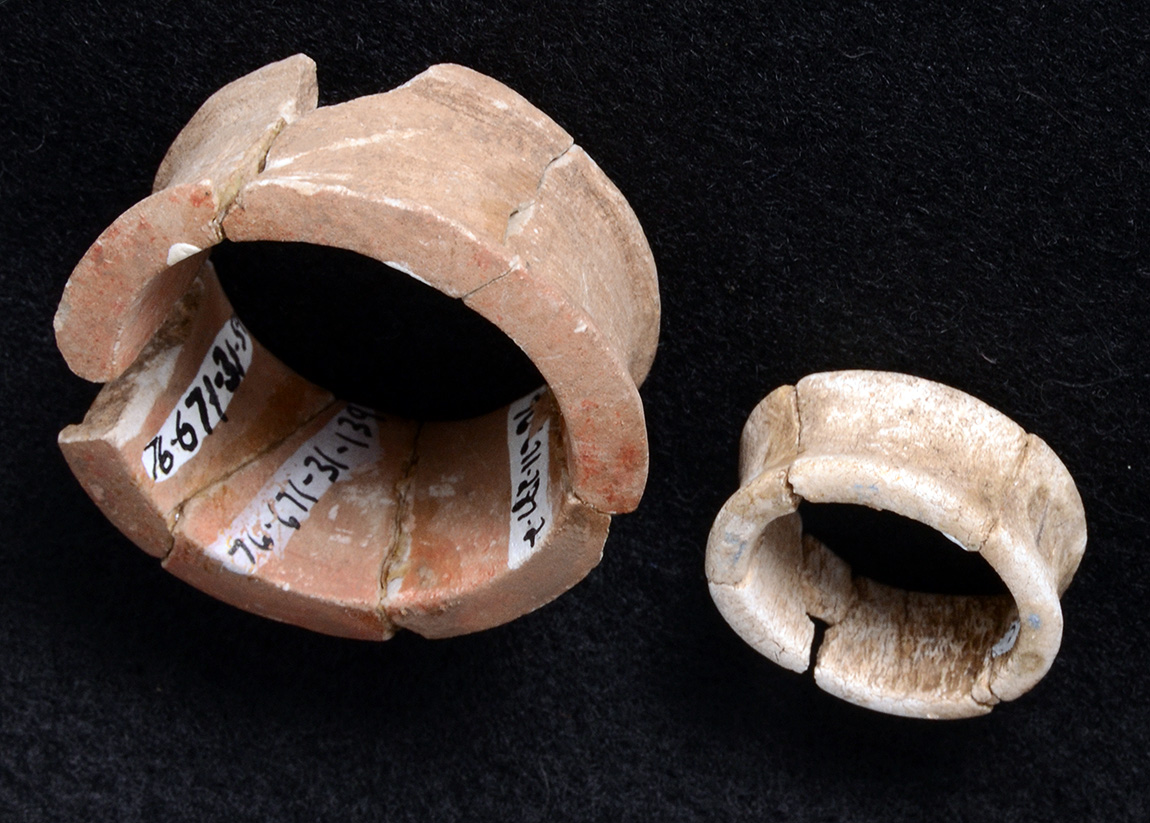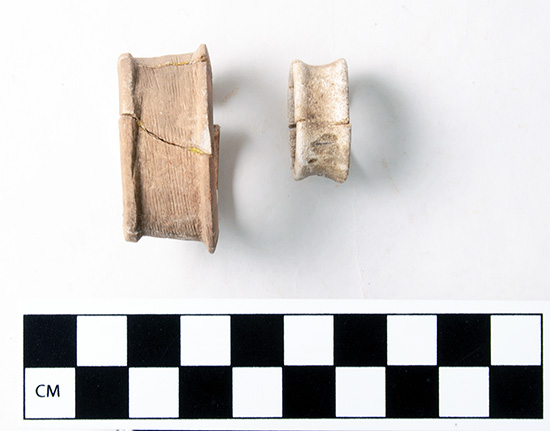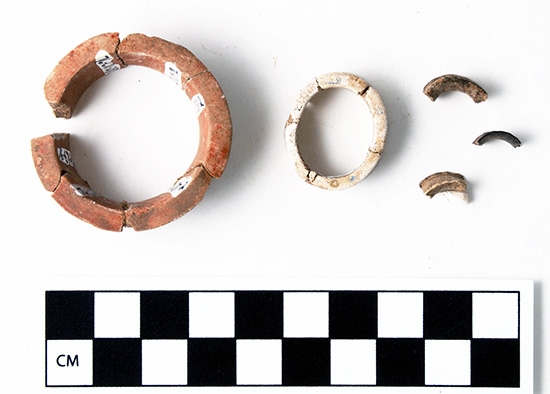
Mary Beth Trubitt, Arkansas Archeological Survey
Artifact of the Month – September 2020

Side views of stone earspool from Standridge structure Feature 12 (left) and bone earspool from Standridge structure Feature 17 (right). Click for a larger view.
Occasionally, archeologists excavate small objects made and used for personal ornamentation from archeological sites in Arkansas. Two earspools excavated from a Caddo site in the Ouachita Mountains give us a glimpse at the type of object that may have been used for everyday adornment or as part of ritual regalia.
In 1975 and 1976, Dr. Ann Early led excavations at the Standridge site (3MN53), an ancestral Caddo site near Caddo Gap in Montgomery County. Initially thought to be a residential location that would provide information on Mississippi period foodways and domestic life in the Ouachita Mountains, the site instead was a low earthen mound that contained a series of buildings, most of which were burned (Early 1988). The final event at the mound was a circular grave (Feature 9) for the burial of three people (the NAGPRA inventory was completed and published in the Federal Register in 2002, and the human remains and associated funerary objects from the grave have been repatriated to the Caddo Nation of Oklahoma).
The earspools were found in the structures, not in the grave. A circular structure (Feature 12) was the earliest building in the sequence; interpreted as domestic in function, it had not been burned. Six fragments of a stone earspool and a small piece of a second similar one were scattered on the floor of the building. Adjacent to Feature 12 was a special-purpose burned structure, Feature 18. These likely dated to the AD mid-1200s to 1300s. Later, additional square or rectangular special-purpose buildings were constructed in the same location (Features 8, 17, and 1) and used for ritual activities, and then burned and buried in the mid-1300s through 1400s. An earspool made from animal bone was on the floor of structure Feature 17. Another earspool, a fragment of a Foster-type ornament of sandstone, was excavated in an off-mound test unit (Early 1988).

